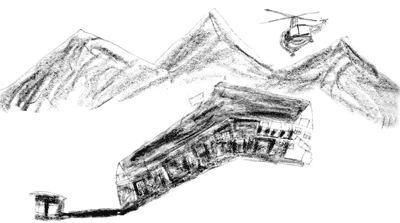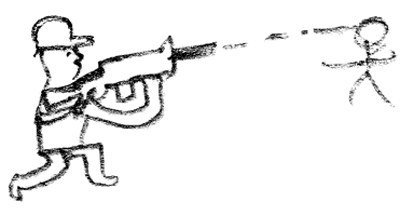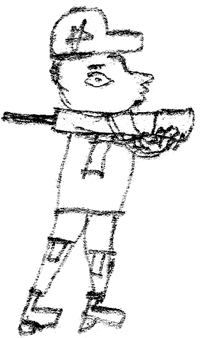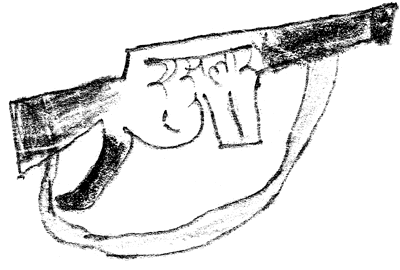|
|
Travelling to Rolpa from Kathmandu, there are plenty of signs of the physical scars of the ten-year old insurgency. Destroyed bridges, bombed out police stations, VDC buildings in ruins. Along the East-West Highway we also see the more recent effects of the madhes uprising: skeletons of burnt trucks and buses.
Hidden and less apparent are the psychological scars of the violence on children. Many children in the midwestern hills who were five years old when the war started are now 17, and have hardly known peace. Besides the orphans, the internally displaced and the homeless, there are thousands of children who have grown up with war lore and talk of killings and bombings.
Those who are most traumatised are the ones who have seen parents and relatives killed in front of their eyes, either by the Maoists or in a series of ruthless counter-insurgency operations by state security. Most children are still bent on taking revenge.
Gobinda Pariyar was six when the army came to Rolpa looking for Maoists four years ago. "The Maoists had taken shelter in our house, and my family ran into the mountains with them as the soldiers arrived," Gobinda remembers, "that night the helicopters came and strafed us and our house was blown up." The soldiers caught his elder sister and she was tortured. Gobinda is now stydying at the Sri Bir Balbhadra School in Thabang and when asked what he wants to be, says simply: "A guerrilla."
 Jas Kumar Budha Magar is 11 and is enrolled in grade three of the Janabadi School in Thabang of Rolpa. He knows his father was killed by policemen, and says he wants to avenge his death by joining the 'People's Liberation Army'. Aruna Gharti is six, and raises his fist in a red salute as he says he wants to join the Maoists.
Jas Kumar Budha Magar is 11 and is enrolled in grade three of the Janabadi School in Thabang of Rolpa. He knows his father was killed by policemen, and says he wants to avenge his death by joining the 'People's Liberation Army'. Aruna Gharti is six, and raises his fist in a red salute as he says he wants to join the Maoists.
In February, a group of students from Kathmandu University organised a drawing competition for children from Grades 3-4 at the Janabadi School in Thabang. The children drew surprisingly accurate images of their school building, of assault rifles, helicopters and portraits of Pushpa Kamal Dahal. Unlike children in government schools elsewhere, Thabang's children knew the exact names of all the guns they drew: "SLR", "INSAS", etc.
Rolpa has always had a tradition of sending its young sons into the Indian and British armies, so children here have been brought up with stories of grandparents having fought in the world wars.
"It is nothing new to them, but the insurgency of the past ten years has had an immediate impact on children," says Madan Nepali, an English teacher. Nepali says it is difficult to know if time will erase these memories and how long the scars will remain.
Many still have nightmares, and when they are awake there are still fears that the country will slide back to war. One thing is certain: Nepali children need help and counselling so they learn to grow up in a peaceful land.

RE-DRAWING SOCIETY: Kathmandu University students recently asked boys and girls from Grade 3-4 in Rolpa to draw their school. They drew surprisingly accurate sketches of their school building, helicopters, guns and portraits of Puspa Kamal Dahal







